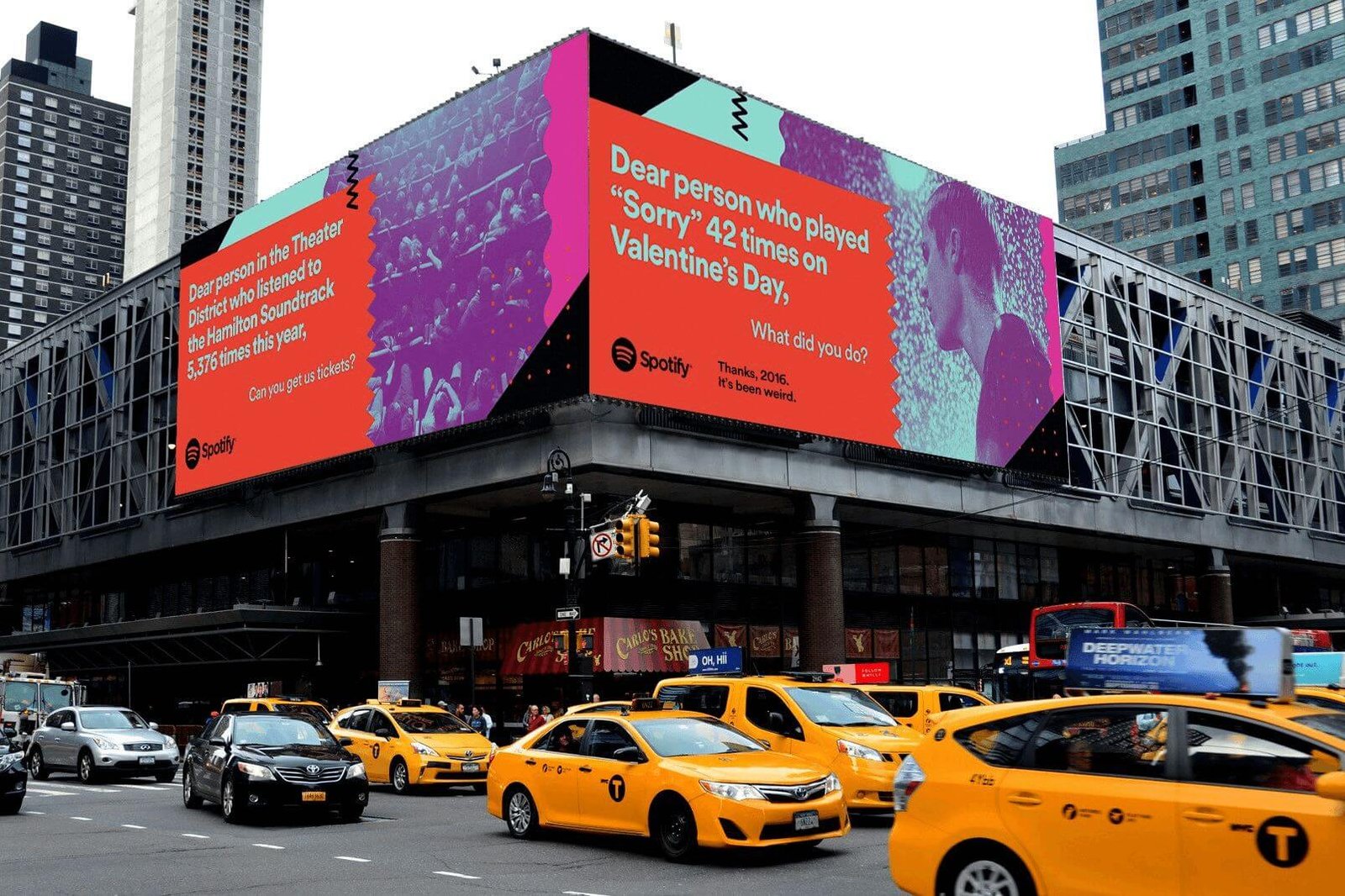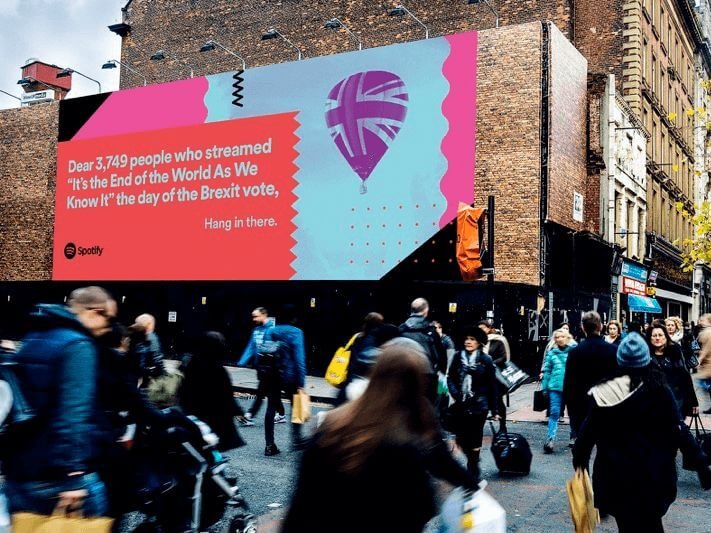
Table of Contents
For many companies, marketing campaigns are the main means of communicating with their market, consolidating their positioning and acquiring new customers.
The increase in available media - and especially in their reach - has literally opened up a world to companies, which have been able to discover new market opportunities outside the boundaries of their own territory. With platforms like YouTube, for example, even advertising campaigns that were created for a single market have the opportunity to have a global reach.
Expanding boundaries has required new expertise: not only knowledge of the language of the target market, but also insights into its culture and customs, so that the adaptation of products and content to the standards of different countries would be as natural as possible.
Localisation](/translation/app-localisation) has therefore become an indispensable process, especially in digital marketing campaigns - because of their possible reach - and in social media marketing campaigns, where the relationship with customers is very close. And not even global marketing, which by definition is “universal”, escapes the power of localisation.
Let’s discover some marketing strategies that have achieved remarkable results through localisation.
Coke: names make a difference
The change in eating habits - and in general the battle against sugar, almost in every country of the world - has not been particularly positive for the Coca Cola Company, which periodically suffers drops in sales.
In 2011, however, the company managed to reverse the negative trend with the Share a Coke advertising campaign: it was so successful that in the United States sales increased by 2%, after 10 years in which the consumption of the beverage was constantly declining.
What was the genius idea? Print the words “Share a Coke with” on the bottle labels followed by a person’s name.
Determining the success of the campaign was not only the selection of the most popular names in each target market.
Coca Cola then repeated the strategy in the “Share a Coke and a Song with” campaign, this time using phrases from the most famous songs in each country.

Source: Beautips
Why was it successful?
Localisation brings the brand closer to its audience, so that even global, world-famous brands are perceived as local and close. It is this proximity that encourages the connection between brand and customer, ensuring sales and brand loyalty.
So, for example, in Italy the presence of Italian names had the double advantage of making Coca Cola perceived as Italian - close to the customer, therefore - offering consumers products in which they could find themselves. It would never have been as successful if English or foreign names in general were on the bottles.
Netflix: make content available to everybody
If Netflix today can count almost 210 million subscribers, 64% of which are outside the United States and Canada, it is thanks to localisation operations, both in terms of language and content.
Its strength is the availability of quality subtitles (and sometimes dubbing) available in 62 languages (according to What’s On Netflix), often including rarer ones like Quechua, Sanskrit, Nepali and many more.
Also contributing to the platform’s success are original productions. In addition to being one of the most popular streaming platforms in the world, if not the most popular, it is also one of the largest content production companies. It manages to maintain these firsts by creating content that it knows its users will enjoy: studying audiences in different countries, creates films and TV series based on the preferences and tastes of each market.
McDonald’s: between global and local
Did you know that McDonald’s menu has sandwiches colored black or white, with rice instead of bread, and carbonated drinks served with cream?
With more than 37 thousand branches in 120 countries, McDonald’s is undeniably a global giant. His work on globalization is even more noteworthy when you consider that food is one of the most deeply rooted aspects of a country’s culture.
So how does McDonald’s manage to maintain its success in so many different places - and then adapt in markets where not only is the food it offers far from the cultural standard, but also manages to deal with so many cultural differences?
Its strategy is to produce localized menus alongside standard products (such as French fries or the Big Mac) that meet the tastes of local customers.
Some examples are McArabia, available only in eastern countries, or Panzerotti, which are available only in Italy. Malaysia had its own special Mango McFlurry. Many vegetarian menus are served in India, but they don’t sell as well in America.
McDonald’s is therefore able to infiltrate the different markets thanks to an in-depth knowledge of the culinary culture and preferences of the population. What face do you think would any Italian have made in front of a McFloat, a Coca Cola served with cream?
 Source: Business Insider
Source: Business Insider
Not a pretty one for sure, and McDonald’s knows it.
McDonald’s is also one of the few Western brands that has successfully penetrated the Chinese market. He has succeeded thanks to his ability to intercept the habits and trends of Chinese culture and adapt to them.
In its debut in China, McDonald’s aimed to sell to middle-class citizens and workers. However, he soon found that he attracted more interest in young people; in addition, it has adapted its menu to Chinese foods and traditions, breaking away from traditional Western menus more sharply than in other markets.
Red Bull
Where does Red Bull come from? This brand is particularly well known in the marketing world for its ability to be widely considered a local brand, even though it is not in fact.
Red Bull’s secret? Organizing extreme sports events in different countries, such as the Red Bull Cliff Diving World Series, the worldwide cliff diving tournament organized in Apulia and Ireland, or the Red Bull Flugtag, “the wackiest aerial race for flying machines without engines to defy gravity thanks to the energy of the pushers and aerodynamics”, which in 2021 was held in Lausanne.
This marketing strategy has allowed Red Bull to connect with youth audiences around the world, associating its brand with the idea of sports - extreme and even digital.
Finally, Red Bull has produced some special versions of its beverages to meet the tastes of certain markets, such as the Coconut Edition available in Singapore.
Ikea: pioneers in localisation
Ikea needs no description. If this is possible, it is thanks to the time and economic investment it has made since its inception in the localisation, of the products themselves as well as its own websites, which has made it famous worldwide.
But how did it do it?
Although the communication is very much linked to the Swedish origins of the brand (see the names of the products, but also the presence of restaurants inside the stores that serve typical Swedish dishes), it was essential for Ikea to create products that were suitable for local markets: no one would purchase items that do not reflect their home and lifestyle. For this reason, Ikea had to develop products that were universal, but with variables that could be adapted - localised, therefore - to the needs of individual markets.
What drove Ikea’s success was the minimization of these variables to locate, both in number and complexity. In the development of the products as well as in the design of the websites, the less design philosophy has been a winner.
Another winning localisation strategy adopted by Ikea was to dedicate to each market its own specific domain and to use the .com domain in a clever way. The tendency of customers is in fact to visit the site in the .com domain also to search for local content, ignoring the presence of domains dedicated to various countries: Ikea has therefore kept the .com domain “regionally neutral” and uses it only to direct customers to its national domain.
eBay: the importance of the technical side
As Nelson Ng and Neil McAllister explain in the article How Unicode enabled eBay to create a global platform, in its early days eBay was a dedicated site located primarily in the United States: the platform therefore contained texts written in English or at most in other languages of Western countries. The first challenges began to arise with its expansion into Asia. eBay used the ISO 8859-1 character encoding - at the time the standard for most computers. This type of encoding, however, was limited to supporting the characters from A to Z, numerals from 0 to 9 and the most common symbols and punctuation marks, but did not support the characters of Asian languages, which are more complicated to handle even at the computer level.
At first, eBay tried to “plug the holes” by using two different encoding types, one for Western languages and one for Asian languages; however, the solution did not prove efficient, as Asian sites generated textual data that Western sites were unable to display. Eventually eBay was forced, not without difficulty, to standardize on a single coding model: UTF-8. The migration took at least 7 months to complete.
Spotify and hyperlocalisation
"Thank you, 2016. 'It’s been weird' is a brilliant marketing campaign launched by Spotify at the end of 2016 as a way of saying goodbye to the year about to end. The campaign had a global scale and used different versions of the same advertisement, but contained localized messages based on the location of the launch.
Based on listener-generated data - such as the number of listens and the location and date of playback - Spotify hung ads on billboards in 14 countries with funny messages that referenced the culture of the location or highlights of 2016.
For example, this billboard appeared in New York:
 Source: Ads of the world
Source: Ads of the world
Dear person who played to “Sorry” 42 times on Valentine’s Day, What did you do?
While in the UK:
 Source: Campaign
Source: Campaign
Dear 3,749 people who played “It’s the end of the world as we know it” the day of the Brexit vote, Hang in there.
This was coupled with a digital media marketing campaign on social, which included the ability to share even more tailored results.
What contributed to the success of the campaign? In addition to the garish colors, which easily jump out at you, Spotify has cleverly chosen the launch period: the end of the year is the time when people tend to reflect the most. Through this hyper-localised campaign and the use of humor, Spotify was able to connect with its users, creating content that they could mirror themselves in. The campaign was shared 669 thousand times on social media and increased word of mouth among 18-34 year olds by 5%.
Euro Disney: story of a failure
The Disneyland amusement parks are world famous. They were incredibly successful in America and also in Japan; however, in Europe the story has had a different outcome. What determined the initial failure of Disney - which ended up accumulating quite a few debts - was the lack of knowledge of French and European culture in general. In fact, the company was negligent and did not do any kind of analysis on the preferences of possible customers, preferring to guess, with all the consequences of the case.
The first problems were already manifested in the choice of location: Paris was selected as the European venue for strategic reasons, however public opinion felt the opening of the park was an attack on French culture and a symbol of the clichés of American consumerist society that was not well liked.
What made the story even more chaotic were the enormous cultural differences between America and Europe, which Disney did not take into consideration.
- It was prohibited to sell alcohol inside the park, ignoring the fact that in the French culture consuming wine at lunch is the norm.
- The staff shifts were organized based on the idea that Monday was a quiet day and Friday was the busiest, when the reality was exactly the opposite.
- The hotels were not set up for breakfast, as the Disney executive was told that "Europeans don’t eat breakfast."
- The lunch hours were also problematic, as everyone wanted to eat lunch at 12:30 p.m.-the traditional lunch time in Europe-while the park was based on Americans’ flexible schedules. Cast members found themselves having to explain to clientele that they could eat as late as 11:30 a.m. or 2 p.m..
This clash of cultures and resulting misunderstandings led to 1,000 staff members quitting just in the first 9 weeks of opening.
Finally, another mistake was ignoring the amusement park culture in Europe, which is profoundly different from the American culture: in America, in fact, the parks are real vacation destinations of several days, while in Europe are considered destinations for a daily outing. In this sense, the many luxury hotels built around the park proved to be useless.
In 1994, the French accounted for only 40% of visitors: most were instead Americans living in Europe or Japanese vacationing on the continent. At the end of the same year, Disney had a total loss of 2 billion euros. It was therefore necessary to adopt a new strategy, which began with the change of the name of the park from Euro Disney to Disneyland Paris, in order to strengthen its identity.
 Source: https://i.ytimg.com/vi/ir64KmmCJwk/maxresdefault.jpg
Source: https://i.ytimg.com/vi/ir64KmmCJwk/maxresdefault.jpg
The lesson we learn from successes and failures, then, is that accurately knowing your target market - even when it comes to global campaigns - is essential to executing successful marketing campaigns and avoiding catastrophic failures and image damage.
Localisation is also a very important process to take care of one’s online presence, increase revenue and boost search engine rankings. According to a well-known and highly cited report by CSA Research, more than half of people prefer to shop on sites where information is available in their own language, and the percentage rises dramatically when it comes to major purchases, such as insurance. The report also points out that language is not the only element to consider in localisation: even on translated sites, the inability to purchase with your credit card or in your own currency is a determining factor in the purchasing process.
Putting a site online and translating it, therefore, is not enough. To achieve maximum results, you need a pool of professionals who know the market and know how to act.
Contact us to find the best solution for your international marketing campaigns.






